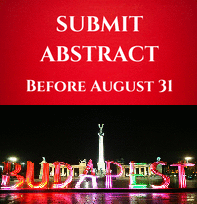
József Balla
University of Debrecen, Hungary
Title: Heme, hemoglobin promotes the progression of atherosclerosis
Biography
Biography: József Balla
Abstract
Often, red blood cells (RBC) infiltrate into these atheromatous lesions as a consequence of leaky neovessels or intraplaque hemorrhage. This presentation reviews the fate of heme/hemoglobin within the lesions. Invading RBCs lyse and release hemoglobin (Hb) inside the plaque, and react with the surrounding plaque lipids. In the reactions between Hb and plaque lipids, different oxidized Hb derivatives are formed including ferriHb (Fe3+) and ferrylHb (Fe4+=O2-) species. Furthermore, the ferryl form is unstable and triggers an electron transfer from proximal amino acids of the globin chain towards iron, resulting of globin radical formation. Termination reactions of globin radicals yield covalently cross-linked Hb multimers which accumulate in human complicated atherosclerotic lesions.
Oxidized Hb species exert different pro-oxidant and pro-inflammatory effects. Both ferriHb and ferrylHb (ferrylHb is to refer to the sum all of those oxidized Hb) sensitize vascular endothelial cells to oxidant-mediated killing and induces lipid peroxidation via the release of heme and redox active iron. Oxidized Hb has been recently shown to provoke the rearrangement of F-actin cytoskeleton and subsequently the formation of intercellular gaps in endothelium in vitro and facilitate the adherence of monocytes to the endothelium through the induction of adhesion molecules: vascular cell adhesion molecule-1 (VCAM-1), intercellular adhesion molecule-1 (ICAM-1) and E-selectin.
Vascular heme oxygenase-1 and ferritin represents a strategy for preventing harm against such insults. They inhibit oxidative damage and inflammation, as well as regulate human smooth muscle cell (HSMC) mineralization. Up-regulation of HO-1 / ferritin system abrogates HSMC calcification and osteoblastic differentiation. Among the products of the system ferritin, and to a lesser extent biliverdin are responsible for the inhibition, while bilirubin and CO do not influence calcification. Ferritin H-chain and ceruloplasmin both known to possess ferroxidase activity exhibit inhibition against osteoblastic transformation of HSMC manifested by upregulation of Cbfa-1, osteocalcin and ALP activity.

